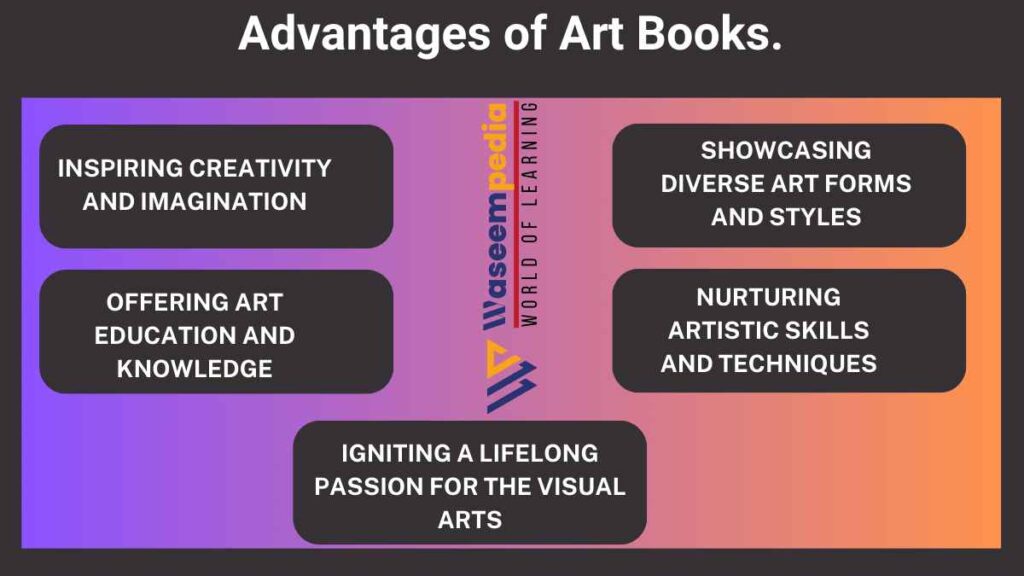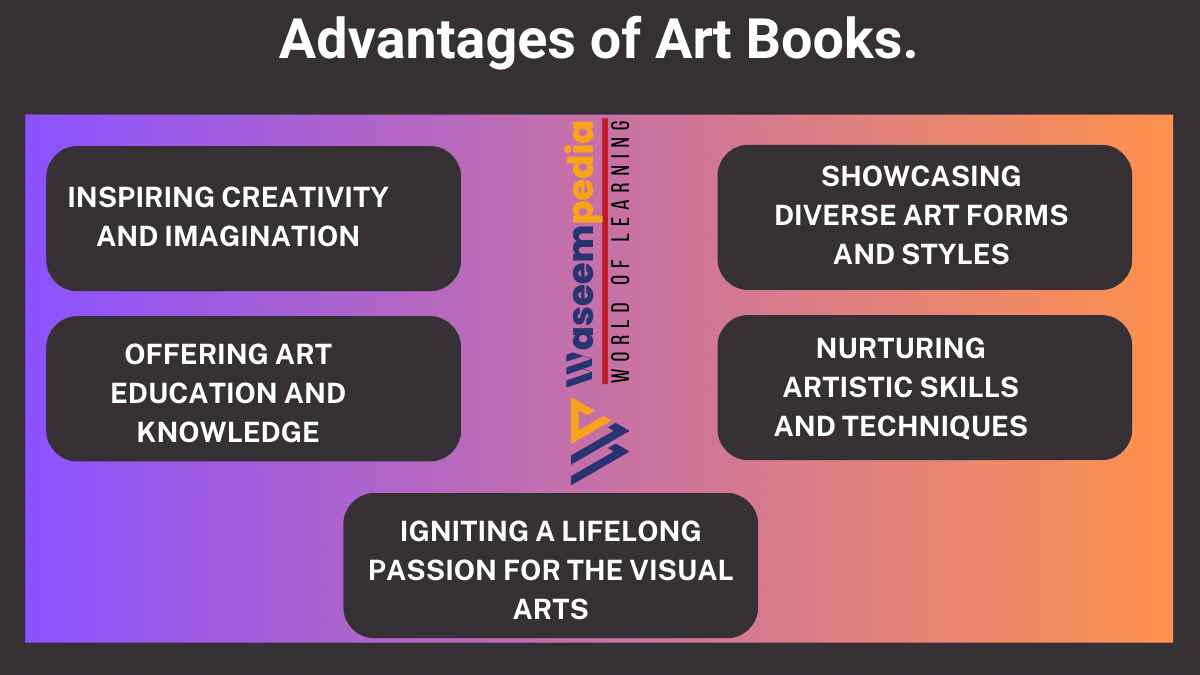Art books are a treasure trove of inspiration, knowledge, and visual delight. They offer a glimpse into the world of art, showcasing masterpieces, artistic techniques, and the stories behind renowned artists.
some advantages are as like, It provides insight into how artists have approached their craft over time, influencing and motivating one another to enhance their abilities and broaden their perspectives.
These books provide a gateway for individuals to explore different art forms, develop their artistic skills, and deepen their appreciation for the visual arts. In this article, we will read many advantages of books especially advantages of art books, highlighting how they inspire creativity, offer art education, and ignite a lifelong passion for artistic expression.
5 Advantages of Art Books.
There are many advantages of arts books but 5 Advantages of Art Books are as following.

1. Inspiring Creativity and Imagination
One of the primary advantages of art books is their ability to inspire creativity and ignite the imagination. Through stunning visuals, detailed descriptions, and discussions on artistic techniques, these books transport readers into the realms of artistic expression.
They showcase a myriad of styles, mediums, and approaches, encouraging readers to explore their own creative potential. Art books serve as catalysts for innovative thinking, encouraging individuals to experiment with different artistic forms, techniques, and materials.
2. Offering Art Education and Knowledge
Art books provide a valuable source of art education, offering insights into art history, artistic movements, and the lives of renowned artists. These books chronicle the evolution of art through the centuries, shedding light on the cultural, social, and historical context behind artistic masterpieces.
They introduce readers to the great masters of art, their techniques, and their contributions to the art world. Art books also delve into the principles of design, color theory, and composition, providing readers with a foundation for their artistic endeavors.
3. Showcasing Diverse Art Forms and Styles
Art books expose readers to a vast array of art forms and styles, ranging from classical to contemporary, from painting to sculpture, and from traditional to experimental. They celebrate the diversity and richness of artistic expression, allowing readers to explore various genres and movements.
By showcasing different artists and their unique approaches, art books inspire readers to appreciate the breadth of artistic possibilities and encourage them to develop their own artistic voice.
4. Nurturing Artistic Skills and Techniques
Art books serve as practical guides for aspiring artists, providing step-by-step instructions, demonstrations, and exercises to nurture artistic skills and techniques. These books offer valuable insights into drawing, painting, sculpting, and other art forms, helping readers refine their craft and expand their technical abilities.
Whether it’s learning about color mixing, shading techniques, or composition principles, art books empower readers to develop their skills and unlock their artistic potential.
5. Igniting a Lifelong Passion for the Visual Arts
Perhaps one of the most significant advantages of art books is their ability to ignite a lifelong passion for the visual arts. By exposing readers to the beauty and power of artistic expression, these books create a lasting impact, fostering a deep appreciation for art.
Art books become cherished companions, encouraging individuals to visit art galleries, attend exhibitions, and explore their local art scene. They inspire readers to integrate art into their lives, whether as creators, collectors, or avid appreciators.
Related FAQ’s
What is the use of art books?
Art books used as resources that provide information, inspiration, and guidance for artists, art enthusiasts, and students. They showcase artworks, discuss techniques, explore art history, and offer insights into the creative process, contributing to artistic development and appreciation.
What are some benefits of art?
Art provides various benefits, including fostering creativity, enhancing emotional expression, promoting cultural understanding, improving cognitive abilities, and offering therapeutic effects on mental well-being.
What are the 5 benefits of drawing?
Drawing has many benefits, including improving fine motor skills, enhancing creativity and problem-solving, boosting concentration and focus, promoting relaxation and stress relief, and facilitating self-expression.
What are 5 facts about art?
Subjectivity: Art is subjective, with diverse interpretations and meanings varying from person to person.
Historical Significance: Art serves as a historical record, reflecting the culture, beliefs, and events of different periods.
Medium Diversity: Art can be expressed through various mediums, including painting, sculpture, literature, music, film, and digital forms.
Influence on Emotions: Art has the power to evoke emotions, influencing the viewer’s feelings and perceptions.
Continuous Evolution: Art evolves over time, reflecting societal changes, technological advancements, and shifts in artistic movements and styles.
What are the benefits of art for children?
Benefits of art for children include fostering creativity, enhancing fine motor skills, promoting self-expression and communication, developing problem-solving abilities, and boosting confidence and self-esteem.
What is the main importance of arts?
The main importance of arts lies in its ability to inspire creativity, foster cultural understanding, express emotions, and provide a platform for communication and reflection, contributing to the enrichment of human experiences.

